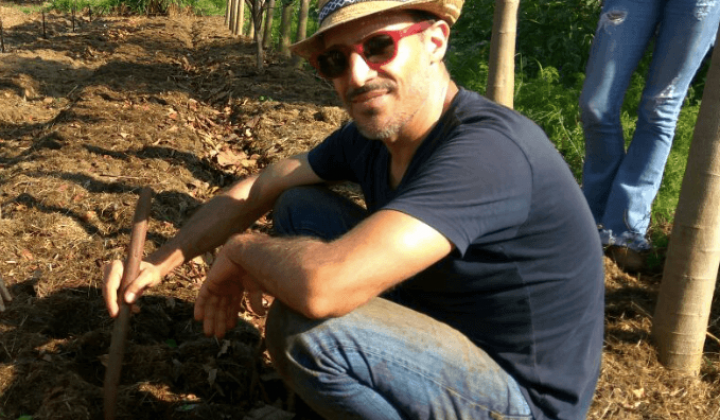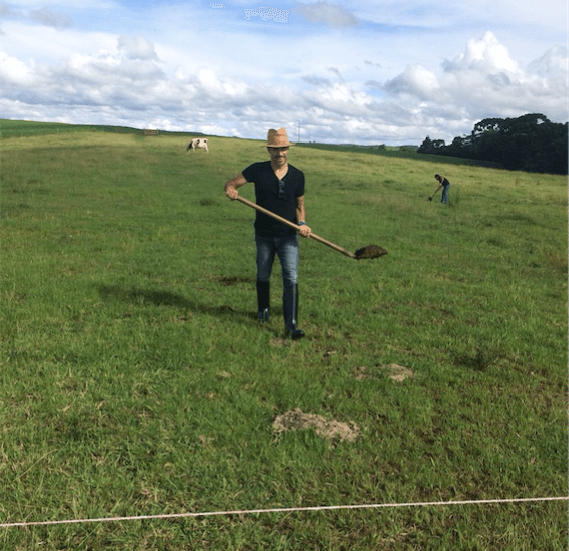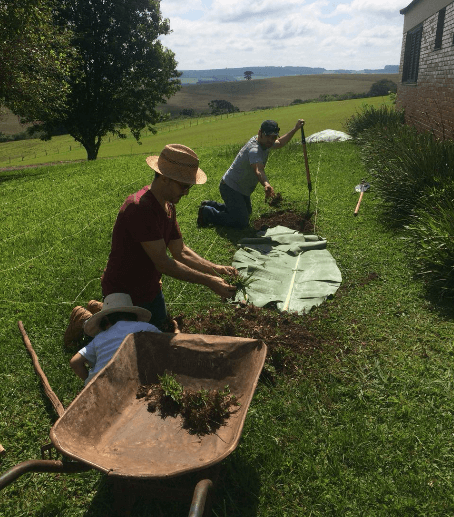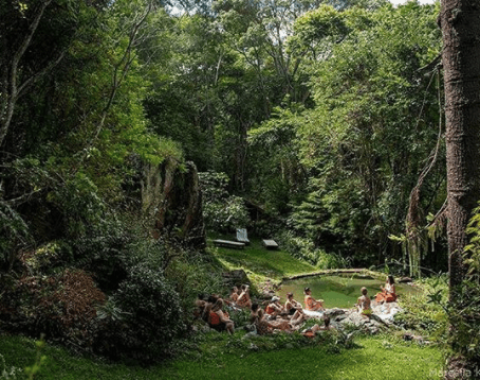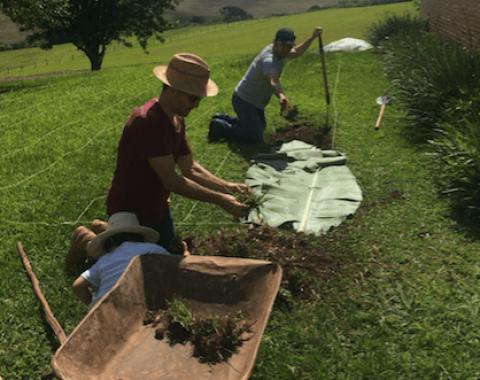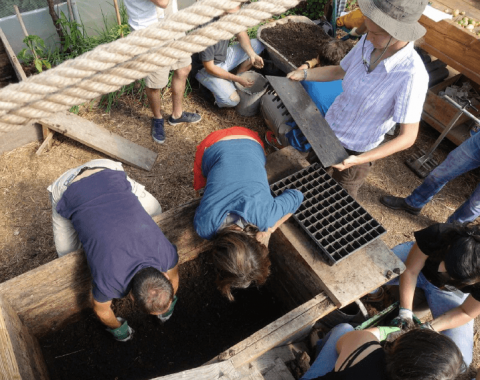?? Just scroll down to get to the English version of the text. Merci.
?? Não sei bem ao certo onde e quando essa ideia começou. Mas acredito que nada na vida vem “de repente”. Tudo é uma grande evolução, basta estarmos com os sentidos aguçados que a corrente nos leva para o lugar certo.
Sempre gostei de comida. De mercados. De sabores. Gosto dos espetinhos das ruas apinhadas de Bangkok e dos restaurantes bacanas da Cidade do México. Também gosto de cozinhar, apesar de não me achar um grande chef. Já comi muita porcaria na vida, tipo McDonald’s e pão Pullman. Hoje em dia sou bem mais seletivo, para não dizer chato. Acredito serem nossas escolhas na hora de comer, escolhas políticas e sociais, por isso penso, logo como.
Durante 2016 e 2017 eu viajei muito. Mais do que normalmente viajo. Por um lado queria alimentar o TravelVince. Achei que se ficasse de 10 a 15 dias em uma cidade, poderia, além de montar guias online completos sobre cada uma, vivenciá-las ao ponto de satisfazer meu desejo de voltar a morar fora do país, sem precisar morar efetivamente fora do país. Como ter um amante (ou alguns amantes) ao invés de um marido. Ou algo parecido.
A BUSCA
Nesse vai e vem entre continentes e terminais de aeroporto, descobri muita coisa deliciosa. Restaurantes, cafés, bares, padarias, hotéis, mercados e afins. Pude ver o crescente interesse de gente de Teerã a Melbourne em comer melhor e produzir alimentos sem degradar o meio ambiente. Gente que pensa antes de comprar aquela laranja linda importada, que foi produzida com agrotóxicos e que voou meio mundo para chegar até ali. Aos poucos fui me encaixando nessa onda do less is more, da comida local e da estação.
Um dia um amigo me falou da serie Chef’s Table, no Netflix. Confesso que quase chorei em vários episódios pela emoção de ver gente tão apaixonada por comida. Mas o que mais me tocou foram as hortas e pomares que fornecem a matéria-prima dos chefs. Por trás de um grande chef há um grande horticultor. E uma luz acendeu.
Quem me conhece sabe que gosto de investigar e por isso logo após cada episódio do Chef’s Table eu vasculhava a internet em busca de mais informações. Foi então que descobri o livro “O Terceiro Prato”, do americano Dan Barber e depois desse livro eu já não conseguia mais olhar para um cardápio sem pensar nas fazendas, nas sementes, na busca do gosto e do sabor de cada coisa. Foi neste livro que descobri a Permacultura, o milho Otto File, a fazenda Polyface, as raízes perenes e Michael Pollan. Acenderam inúmeras luzes.
O ENCONTRO
Em meio a esse turbilhão de novas ideias, tive uma semana solitária nas Ilhas Faroe, um lugar inóspito, que, mesmo assim, está em busca de uma identidade gastronômica. Passei por Copenhague e vi a mudança pela qual tem passado a cidade por causa da culinária, e em Berlim pude testemunhar a enorme quantidade de mercados orgânicos e restaurantes vegetarianos que abriram desde a última vez que havia morado por lá. Terminei a viagem em Paris, com um almoço feito em casa por uma amiga que ama cozinhar. Cada coisa servida tinha sido comprar em um vendedor diferente, das frutas ao queijo, do pão ao vinho. Dá trabalho, mas a satisfação é incomparável.
Ao voltar para o Brasil mergulhei ainda mais nas pesquisar e descobri a Agricultura Sintrópica, do suíço Ernest Goetsch, que transformou uma área degradada da Bahia em uma floresta de alimentos. Conheci também o trabalho de Ana Primavesi, que veio da Áustria para cá e nos abriu o universo do cuidado com os solos tropicais. Ela afirma que solo pobre produz alimentos pobres que, por conseguinte, geram uma sociedade pobre.
Em outubro de 2017 eu já estava na Fazenda Lila, na Serra da Mantiqueira, fazendo meu primeiro curso de agrofloresta. Ali eu conheci a filosofia indiana Ahimsa, para produção de um leite quase mágico. Em novembro, passei 10 dias no Instituto de Permacultura da Pampa, em Bagé, no Rio Grande do Sul, de onde voltei com meu diploma de permacultor. Foi uma experiência indescritível, tanto no plano intelectual quanto no espiritual. Já não tinha mais volta, agora eu queria produzir meus próprios alimentos e ter um canto do planeta para cuidar.
OS DESDOBRAMENTOS
Ainda não sei bem ao certo onde quero chegar com tudo isso. Por hora estou experimentando em um pequeno pedaço da fazenda da família, no interior do Paraná. Em meio a campos de soja transgênica consegui um lugarzinho perto da sede, meio isolado do movimento geral da fazenda, para fazer uma pequena horta, testar um galinheiro e viver no campo durante metade da semana. Tem sido muito bom, mas vejo o quanto ainda preciso aprender, por isso sigo me matriculando em cursos, fazendo contatos e esperando as árvores e os legumes crescerem.
Outra coisa interessante tem sido o ritmo das coisas. Leva tempo até ver o efeito do sol durante todas as estações do ano, as árvores plantadas há dois meses estão do mesmo tamanho, chove muito, depois em dois dias de sol está tudo seco e esturricado. Mas vamos lá…
?? I do not know for sure where and when this idea came about. However, I believe that nothing in life comes “all of a sudden.” Everything is part of a process and just being with sharpened senses, the chain of events leads us to the right place.
I always enjoyed food, markets, flavors. I love skewers from the crowded streets of Bangkok and cool restaurants in Mexico City. I also like cooking, although I do not consider myself a great chef. I’ve eaten a lot of junk in life, like McDonald’s and packaged bread. Today I am much more selective, not to say boring. I believe our choices at mealtimes are political and social choices, so I think before I eat.
During 2016 and 2017 I traveled a lot. More than usual. I wanted to research TravelVince, at least that was the excuse. I thought staying around 15 days in one city would give me enough time to get a lot of information for the site and most importantly, it would quench my thirst for living abroad, without having to move overseas. Got it?
THE SEARCH
In this back and forth between continents and airport terminals, I found a lot of delicious things. Restaurants, cafes, bars, bakeries, hotels, markets and the like. I could see the growing interest of people from Tehran to Melbourne on eating better and producing food without degrading the environment. People who think before buying that beautiful imported orange, produced with pesticides and flown halfway around the world to get there. Gradually, I was getting into this wave of less is more, locavores and the seasonality.
One day a friend told me about the series Chef’s Table on Netflix. I confess that I almost cried in several episodes seeing people so passionate about food. But what struck me most were the gardens and orchards that provide the raw materials for chefs. Behind a great chef, there is a great horticulturist. And a light switched on in my brain.
Anyone who knows me knows I like to investigate. Therefore soon after each episode of Chef’s Table, I scoured the Internet for more information. So I discovered the book “The Third Plate,” by American chef Dan Barber. After this book, I could no longer look at a menu without thinking of farms, seeds, and taste. It was in this book that I discovered Permaculture, Otto File corn, Polyface farm, the perennial crops and Michael Pollan. They lit many lights.
NEW FINDINGS
Amid this flurry of new ideas, I had a solitary week in the Faroe Islands, an inhospitable place that is also in search of a gastronomic identity. In Berlin, I witnessed the vast amount of organic markets and vegetarian restaurants that have opened since the last time I had lived there. I finished the trip in Paris, with a lunch made at home by a friend who loves to cook. Everything served was purchased from a different vendor. The fruit, cheese, bread, and wine. Its an effort, but the satisfaction is unparalleled.
Upon returning to Brazil I plunged further in my research and discovered Syntropic Agriculture, developed in Bahia by the Swiss Ernst Goetsch. I also found the work of Ana Primavesi, who came from Austria to Brazil and researched about our soils. According to her, poor soil produces mediocre food, which, in turn, generate an impoverished society.
In October 2017 I went to Fazenda Lila for my first course on Agroforestry, where I learned about Ahimsa, the Indian philosophy of non-violence they use to produce an almost magical milk. In November, I spent ten days in the Permaculture Institute of the Pampa, in Bagé, Rio Grande do Sul, where I returned with my permaculturist degree. It was an indescribable experience in both the intellectual and spiritual levels. I had reached the point of no return. Now I wanted to produce my own food and have a corner of the planet to care for.
THE DEVELOPMENTS
I do not know for sure yet where I’m going with all this. For now, I am experimenting with a small piece of the family farm in the Paraná countryside. Amid transgenic soybean fields, I chose a small plot near the main house to create a small vegetable garden, try a chicken coop and live in the country for half of the week. It has been exciting, but I see how much more there is still to learn.
Another interesting thing has been the pace of things. It takes time to see the effects of the sunlight during all seasons. The trees planted two months ago are still the same size. It rains a lot, and after two sunny days, it’s all dry and parched. But life goes on…
